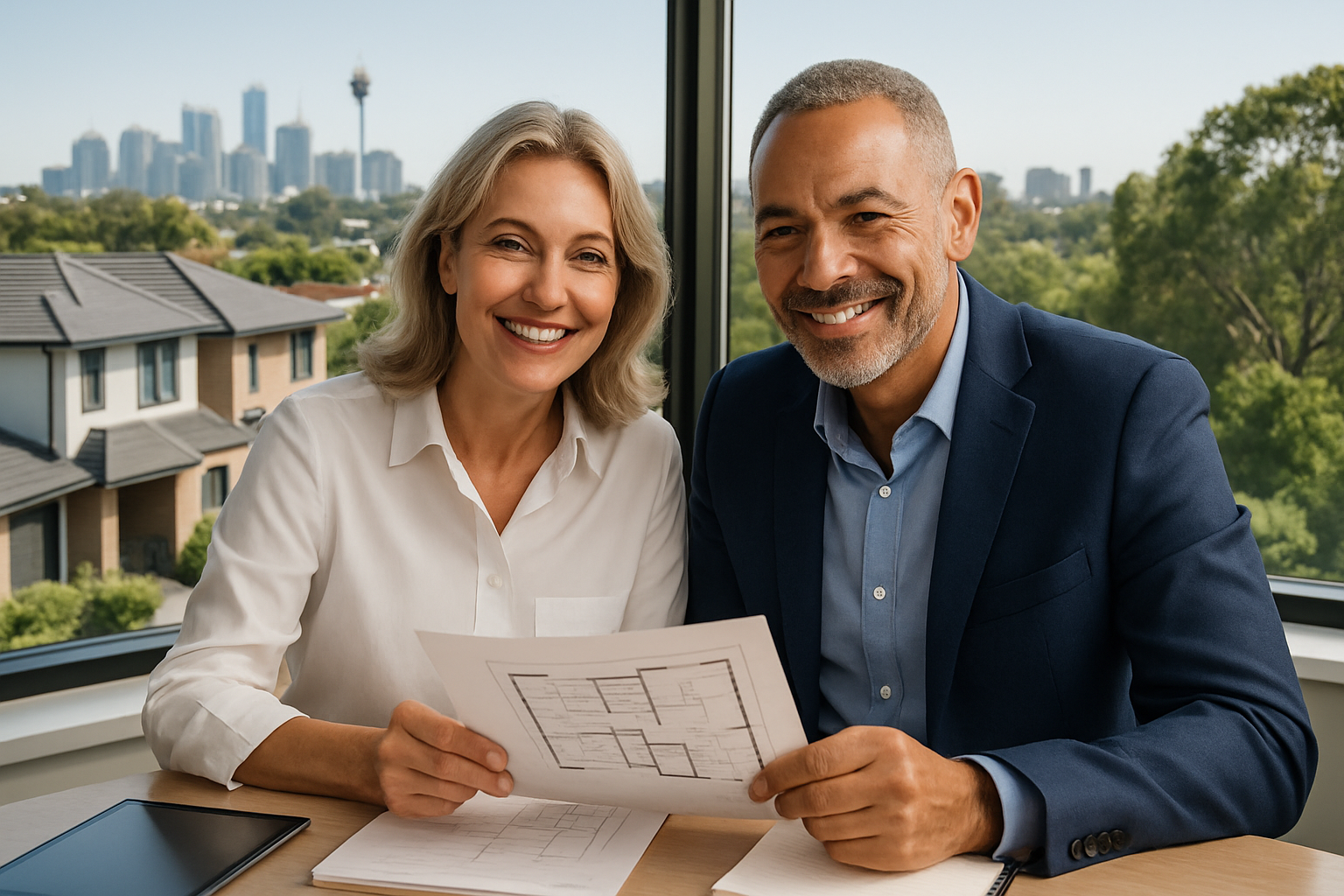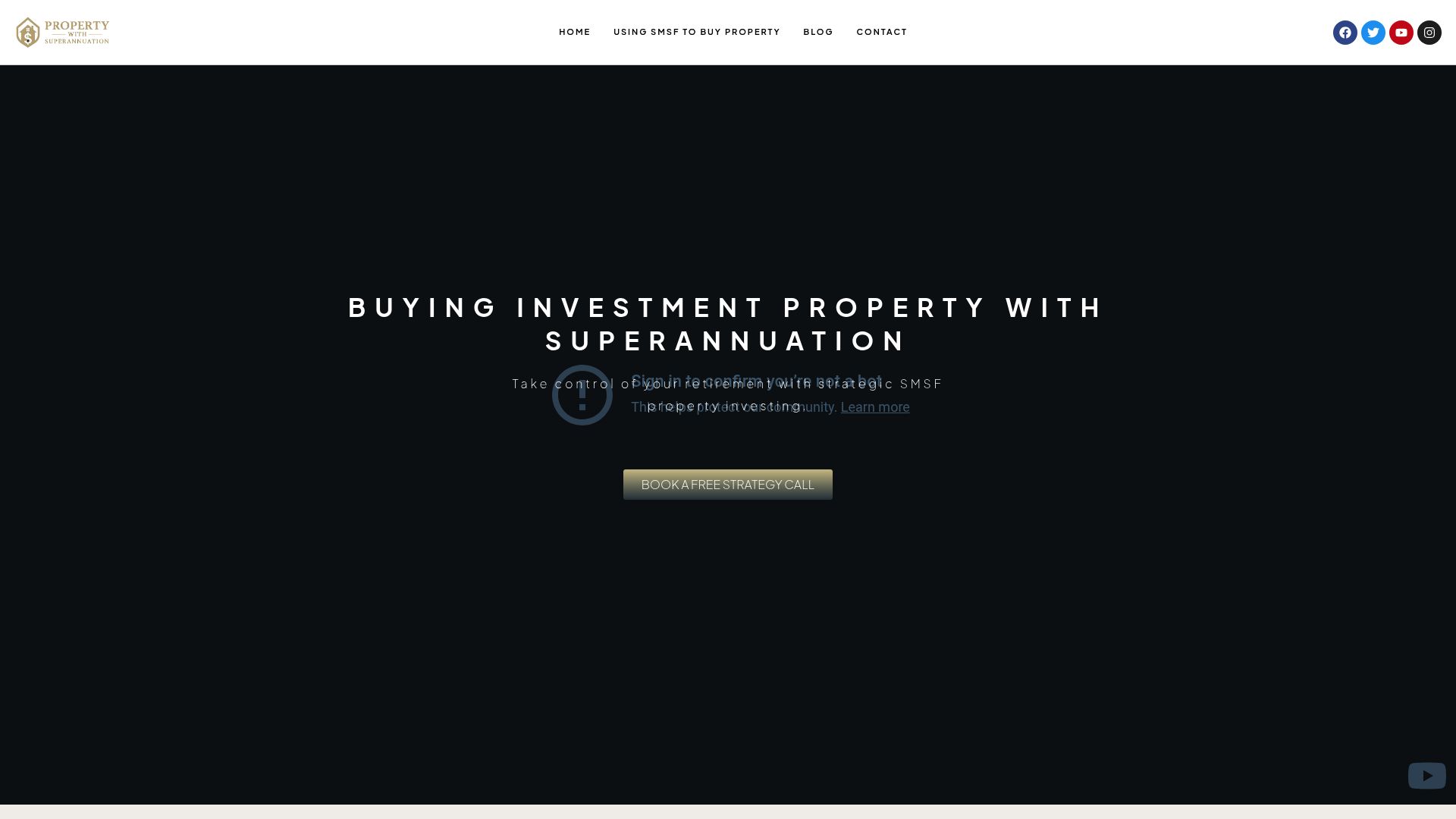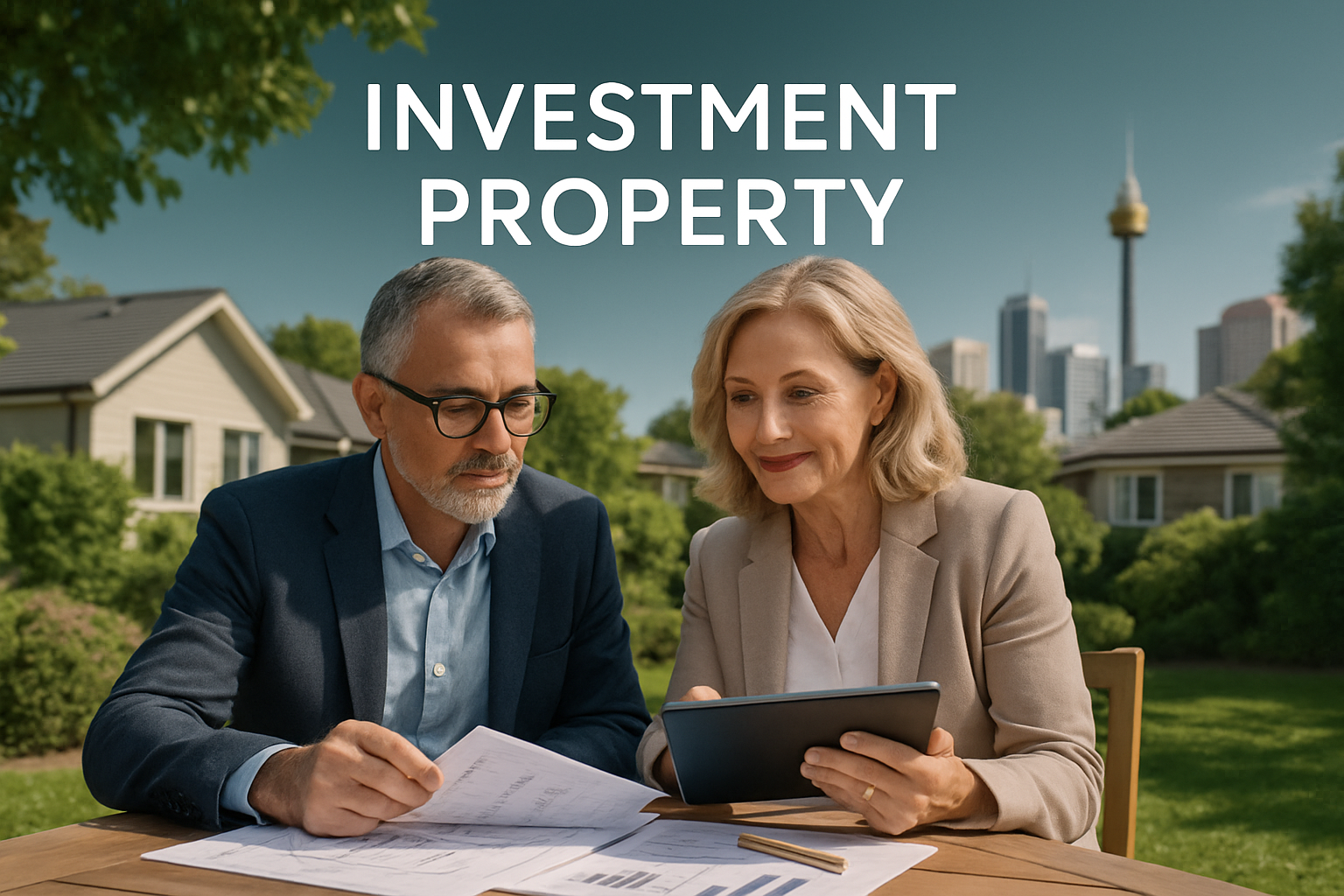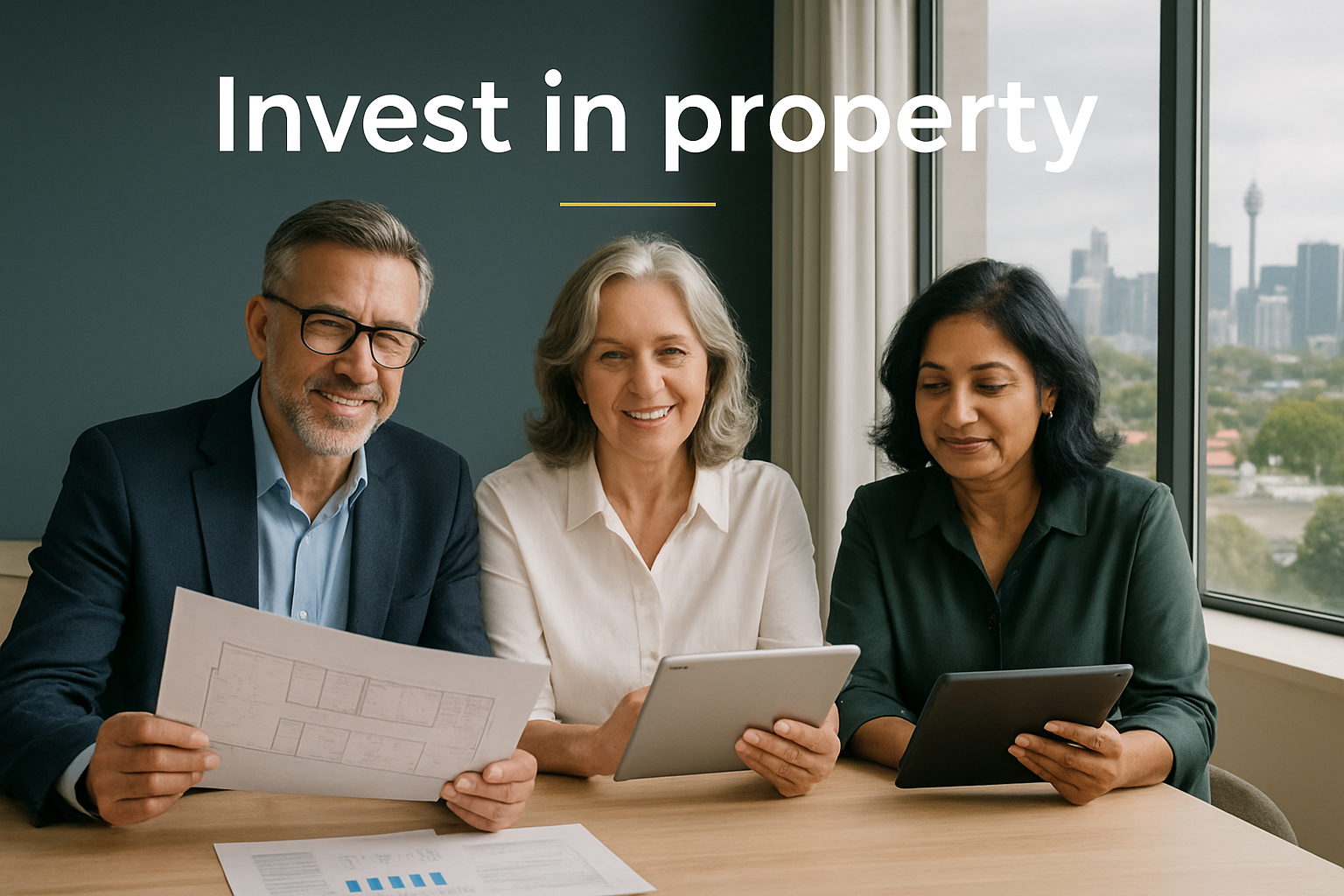Imagine being able to build investment property from the ground up—even if you’re just starting out. The potential to shape your financial future is real, and this guide is designed to show you how.
We’ll break down every step of the process for beginners in 2025. You’ll discover how to set clear investment goals, secure financing, pick the right location, design and build your property, and unlock strategies to maximize your returns.
With practical tips, expert insights, and easy-to-follow advice, you’re about to learn how to turn property investing from a dream into an achievable reality.
Understanding Investment Property Fundamentals
Embarking on the journey to build investment property starts with a solid grasp of the basics. Understanding what makes an investment property unique, why building can be advantageous, and how the 2025 market is shaping up will give you the confidence to move forward.

What is an Investment Property?
An investment property is real estate purchased with the goal of generating income or capital growth, rather than being lived in by the owner. You can choose from several types:
- Residential: Houses, apartments, townhouses
- Commercial: Offices, retail, warehouses
- New builds: Properties constructed from the ground up
The key difference between investment and owner-occupied homes lies in the purpose. When you build investment property, your focus is on long-term wealth and financial stability, not just personal comfort.
Why Build Instead of Buy Existing?
Opting to build investment property gives you unique advantages. You have full control over design choices and can maximize depreciation deductions from day one. New builds often come with lower maintenance costs and are more attractive to tenants.
Consider this ROI comparison:
| Property Type | Initial Cost | Annual Rent | Maintenance | 5-Year ROI* |
|---|---|---|---|---|
| New Build | $500,000 | $28,000 | $2,000 | 7.2% |
| Existing | $500,000 | $26,000 | $4,000 | 5.8% |
*Assumes similar location and vacancy rates. Building can help you outperform established properties over time.
2025 Market Trends and Forecasts
The property landscape is evolving rapidly. In 2025, experts see steady growth in property values, with rental yields remaining strong in major cities and select regional areas. Construction costs are expected to stabilize as supply chain issues ease.
According to Top Property Investment Trends To Watch In 2025, smaller cities and green buildings are gaining traction, while technology is streamlining the build investment property process. Staying informed on these trends can help you make smarter investment decisions.
Key Risks and Rewards
Every decision to build investment property involves weighing risks and rewards. Common pitfalls for beginners include:
- Overcapitalizing on upgrades
- Poor market timing
- Underestimating holding costs
Yet, the potential upsides are significant. You can enjoy capital growth as property values rise and earn steady rental income, especially if you choose a growth area and keep your costs in check.
Investment Property Taxation Basics
Tax benefits are a major draw when you build investment property. You can claim depreciation on the building and fittings, deduct interest, and offset losses (negative gearing) against other income. For example, a new build may allow you to claim $8,000 in annual depreciation, resulting in thousands in tax savings each year.
Working with a property-savvy accountant ensures you maximize deductions and remain compliant.
Setting Realistic Goals and Expectations
Before you build investment property, clarify your goals. Are you seeking quick returns, or building long-term wealth? Assess your risk tolerance and decide on an investment timeline that matches your lifestyle. Clear, measurable objectives keep you focused and help you track your progress from the start.
Step 1: Planning Your Investment Property Strategy
Starting your journey to build investment property begins with a solid plan. By breaking down your strategy into clear steps, you’ll avoid common pitfalls and set yourself up for success. Let’s explore each part of the planning process, so you can move forward with confidence.
Defining Your Investment Goals
Before you build investment property, clarify what you want to achieve. Are you seeking quick capital gains, or do you prefer steady rental income over the long term? Short-term strategies focus on flipping new builds, while long-term plans prioritize rental returns and portfolio growth.
Align your property investment with broader financial goals, such as building wealth for retirement or diversifying your assets. Set clear, measurable objectives—like achieving a specific yield or timeline—so you can track progress and stay motivated.
Budgeting and Calculating Costs
Budgeting is critical when you build investment property. Consider all upfront expenses, such as land purchase, construction, legal fees, and stamp duty. Don’t forget ongoing costs like property management, maintenance, and insurance.
Here’s a sample budget for a $500,000 build:
| Item | Estimated Cost |
|---|---|
| Land | $200,000 |
| Construction | $250,000 |
| Legal/Stamp Duty | $25,000 |
| Other Fees/Buffer | $25,000 |
Planning for these expenses will help you avoid financial surprises and keep your project on track.
Financing Your Build
Securing finance to build investment property involves choosing the right loan type. Construction loans, interest-only options, and fixed or variable rates are all available. In 2025, lenders may have specific deposit requirements and stricter criteria.
Compare products from major banks to find the best fit. Economic conditions and forecasts, such as those in the 2025 Real Estate Outlook, can influence borrowing power and interest rates. Always factor in potential changes to ensure you’re prepared for the future.
Building Your Investment Team
A strong team is essential when you build investment property. Key professionals include a mortgage broker, buyer’s agent, solicitor, builder, and accountant. Each plays a unique role in guiding your decisions and protecting your interests.
Vet your team by checking qualifications, references, and reviews. Choose professionals experienced in investment builds for the best results. Building this network early will streamline each stage of your project.
Understanding Local Regulations and Zoning
Every council has its own rules for developing property. Before you build investment property, research local zoning, planning permits, and building codes. Major Australian cities often have strict requirements, so early investigation is vital.
Work with your solicitor and builder to navigate the approval process. Understanding these regulations upfront helps you avoid costly delays and ensures your build is compliant from day one.
Risk Management and Contingency Planning
Even with careful planning, challenges can arise as you build investment property. Delays, cost overruns, and market shifts are common risks. Build in financial buffers and have backup plans ready.
Diversify your risk by considering market trends, insuring your build, and setting realistic timelines. Proactive risk management gives you the confidence to handle surprises and stay focused on your goals.
Buy Investment Property with Superannuation
Did you know you can build investment property within your superannuation? Using a self-managed super fund (SMSF), investors can access tax efficiencies, flexible property choices, and retirement planning benefits.

This strategy allows you to grow wealth for the future while staying in control of your investments. Explore SMSF rules and consult an expert before proceeding, as regulations can be complex.
Step 2: Choosing the Right Location and Land
Finding the ideal spot to build investment property is a critical step that shapes your long-term success. The right location can boost rental demand, increase capital growth, and protect your investment against market swings. Let’s break down each factor, so you can confidently select the perfect land for your build investment property journey.

Identifying High-Growth Areas
Pinpointing high-growth suburbs is the foundation for a successful build investment property. Focus on locations with strong population growth, infrastructure upgrades, and robust rental demand. Analyze data from government projections and property research portals to shortlist suburbs. Look for developments like new transport links or shopping precincts, which signal future value.
For 2025, U.S. Real Estate Market Outlook 2025 highlights the importance of emerging trends and shifting demographics in property selection. Choosing a suburb with the right momentum can set your build investment property up for both capital gains and steady rental returns.
Researching Local Amenities and Infrastructure
The appeal of your build investment property depends on its proximity to daily essentials. Tenants are drawn to homes near schools, public transport, shops, and employment hubs. Before committing, tour the area at different times and check access to medical centers, parks, and recreation.
List out key amenities within a 2km radius. Compare how these features stack up against neighboring suburbs. A location with superior infrastructure often commands higher rents and lower vacancies, directly impacting your investment’s bottom line.
Evaluating Land Options
When you build investment property, land selection is everything. Decide between greenfield (new estates) and infill (established suburb) sites. Greenfield lots often mean more modern infrastructure and fewer surprises, while infill sites offer established communities and proven rental demand.
Assess the site’s orientation for sunlight, check soil quality, and ensure easy access for construction vehicles. Ask for a recent soil test and review service connections for water, gas, and electricity. The right land choice minimizes delays and unexpected costs for your build investment property.
Understanding Land Covenants and Restrictions
Many new developments have covenants or design guidelines that affect how you build investment property. These rules can dictate house size, façade style, fencing, or landscaping. Review all restrictions before signing a contract.
For example, some estates in Melbourne’s growth corridors require minimum setbacks or certain exterior finishes. Ignoring these rules can lead to costly redesigns or council issues. Always clarify requirements with the developer or your solicitor upfront.
Negotiating Land Purchase
Negotiation is a vital skill when you build investment property. Research recent sales in the area to determine fair value. Don’t be afraid to make an offer below asking price, especially if the market is slow or the lot has been listed for a while.
Key contract clauses to review include settlement periods, deposit amounts, and conditions for finance approval. Engage a buyer’s agent or solicitor to help secure favorable terms. Remember, saving even a small percentage on land purchase can boost your overall project returns.
Due Diligence and Title Checks
Before you commit to any land for your build investment property, complete thorough due diligence. Order a title search to reveal any easements, encumbrances, or restrictions that could impact your plans. Easements may limit where you can build or place services.
Professional legal advice is essential at this stage. Your solicitor will interpret complex legal documents and ensure you’re not taking on unexpected risks. This step protects your investment and prevents costly surprises down the track.
Environmental and Flood Risk Assessments
Environmental checks are crucial when you build investment property. Investigate if the land is in a flood-prone area, bushfire zone, or has contamination history. Use government mapping tools to assess risks and ask for recent environmental reports.
A professional risk assessment can reveal hidden issues, helping you avoid insurance headaches or planning delays. Factoring in these details early means your build investment property will be safe, compliant, and attractive to future tenants.
Step 3: Designing and Building Your Investment Property
Designing and constructing your build investment property is where your vision starts to become reality. This stage is all about smart decisions, from builder selection to choosing energy-efficient features. Every step you take here plays a crucial role in maximizing your future returns and minimizing costly mistakes.

Selecting the Right Builder
Finding the right builder for your build investment property is essential. Start by researching reputable builders with strong reviews, valid licenses, and comprehensive insurance. Check their previous projects and ask for references from other investors.
A builder’s contract structure matters. Fixed-price contracts offer budget certainty, while cost-plus contracts can expose you to variable costs. Compare these options and always read the fine print.
Stay informed about current trends by reviewing resources like Real Estate in Focus: 2025 Trends to Watch, which highlights the importance of asset selection and adapting to market shifts. This knowledge helps you choose a builder aligned with your investment goals.
Choosing a Profitable Floor Plan
The floor plan you select directly impacts your rental yield and tenant appeal. For a build investment property, consider layouts like dual occupancy, granny flats, or studios, which cater to diverse tenant needs and boost income potential.
Look for floor plans that maximize space efficiency. Open-plan living, extra bathrooms, and flexible rooms add value. Think about future trends—remote workspaces or multi-generational living are increasingly popular.
A profitable floor plan should balance functionality and low ongoing maintenance. Consult your property manager or local agent for insights on what tenants in your target area prefer.
Customization vs. Standard Inclusions
Deciding where to customize and where to stick with standard inclusions can make or break your build investment property budget. Standard inclusions often cover essentials like flooring, appliances, and fixtures. Custom upgrades, such as stone benchtops or smart home systems, can attract higher-quality tenants.
However, not all upgrades guarantee a higher return. Focus on improvements that increase rental value or reduce long-term maintenance, like durable flooring or energy-efficient lighting.
Table: Standard vs. Upgrade Inclusions
| Feature | Standard Inclusion | Upgrade Option |
|---|---|---|
| Kitchen Benchtop | Laminate | Stone |
| Flooring | Carpet/Vinyl | Timber/Hybrid Plank |
| Appliances | Basic | Premium/Smart |
Evaluate each option based on tenant preferences and your investment goals.
Navigating the Approval Process
Before construction begins, your build investment property must pass through several approval stages. Start with a development application (DA) or planning permit from your local council. This process reviews your plans against zoning laws, building codes, and design guidelines.
Once approved, obtain building permits and schedule required inspections. Each stage—foundations, framing, and final fit-out—requires sign-off to ensure compliance and safety.
Approval timelines can vary depending on location and project complexity. In major cities, allow extra time for council reviews and potential appeals. Stay proactive and keep communication open with your builder and council officials.
Construction Timeline and Milestones
A clear construction timeline helps you manage expectations and reduce stress. Most build investment property projects follow these key stages:
- Site preparation and slab pour
- Framing and external structure
- Lock-up (windows, doors, roof)
- Internal fit-out (plumbing, electrical, finishes)
- Final inspections and handover
Example 6-Month Build Schedule
| Month | Stage |
|---|---|
| 1 | Site prep, slab |
| 2-3 | Framing, external structure |
| 4 | Lock-up |
| 5 | Internal fit-out |
| 6 | Final inspections, handover |
Tracking milestones lets you spot delays early and keep your project on track.
Managing Costs and Avoiding Overcapitalization
Controlling your budget is vital when you build investment property. Monitor progress payments closely and question any variations from the original contract. Set aside a contingency fund—typically 5-10% of your budget—for unexpected costs.
Avoid overcapitalizing by researching local property values. Don’t spend more on upgrades than the market will support. Regularly review your budget and get written quotes for any changes.
Work with your builder to minimize costly surprises and keep your financial goals on target.
Quality Control and Final Inspections
Ensuring quality at every stage protects your build investment property from future headaches. Arrange independent inspections at major milestones, such as slab, frame, lock-up, and practical completion.
Create a defect list (also known as a “punch list”) and review it with your builder before handover. Double-check that all contract specifications are met, from finishes to warranties.
Don’t rush this step. Taking time now can save you thousands in repairs and help secure happy tenants sooner.
Sustainable and Energy-Efficient Building Options
Incorporating sustainable features into your build investment property lowers running costs and attracts eco-conscious tenants. Consider installing solar panels, high-quality insulation, and water-saving fixtures.
Energy-efficient designs, such as north-facing windows and passive cooling, can significantly reduce energy bills. These features also increase your property’s appeal in a competitive rental market.
Sustainable choices are not only good for the planet—they’re a smart way to future-proof your investment and maximize long-term returns.
Step 4: Renting Out and Managing Your Investment Property
You’ve reached the exciting stage where your build investment property is ready to generate income. Renting it out and managing it well is crucial to maximize returns and protect your asset. Here’s how to approach this process with confidence.
Preparing Your Property for Tenants
Before listing your build investment property, ensure it’s tenant-ready. Start with a thorough final clean, removing all construction dust and debris. Arrange safety checks for smoke alarms, electrical systems, and gas connections to meet legal standards.
Obtain compliance certificates for essential services. Set a competitive rent by researching similar properties in your area. Presenting a spotless, safe home helps attract quality tenants and reduces vacancy time for your build investment property.
Marketing and Tenant Selection
Effective marketing ensures your build investment property stands out in a busy rental market. Use professional photography, engaging descriptions, and list on major property portals. Host open homes at convenient times to reach more prospective tenants.
Screen applicants carefully by checking references, rental history, and conducting credit checks. This reduces the risk of rental arrears and helps secure reliable tenants who will respect your investment.
Understanding Landlord Responsibilities
Owning a build investment property comes with specific legal obligations. You must provide a written tenancy agreement, correctly lodge the tenant’s bond, and handle repairs promptly.
Common landlord mistakes include neglecting repairs or missing required documentation. Staying up to date with tenancy laws in your state is crucial. This protects your interests and keeps your build investment property compliant.
Property Management Options
Decide if you’ll manage your build investment property yourself or hire a professional. DIY management offers savings but demands time and knowledge. Professional property managers typically charge 6–8% of weekly rent.
| Option | Pros | Cons |
|---|---|---|
| DIY | Cost-saving, control | Time-consuming, legal risks |
| Professional | Expertise, convenience | Fees, less direct control |
Evaluate your skills and availability. Many first-time investors prefer professional management for peace of mind.
Maximizing Rental Yield
To boost returns on your build investment property, review rent annually and consider minor updates like fresh paint or modern appliances. Furnishing can also attract higher-paying tenants, especially in inner-city markets.
Small improvements often deliver strong yield increases. For example, installing air conditioning or secure parking can justify higher rent and reduce vacancy periods. Stay proactive and keep an eye on local market trends.
Handling Vacancies and Tenant Issues
Vacancies are inevitable, but you can minimize downtime by acting quickly. Advertise your build investment property as soon as notice is given. Respond to tenant complaints promptly and document all communications.
If issues escalate, follow formal dispute resolution processes. In rare cases, you may need to manage an eviction according to local law. Staying professional and organized protects both your investment and reputation.
Ongoing Maintenance and Compliance
Routine inspections are essential to identify small issues before they become costly. Schedule regular repairs and keep a record of all maintenance for your build investment property.
Stay updated on changes in tenancy legislation to remain compliant. Well-maintained properties attract quality tenants and support long-term capital growth.
Step 5: Maximizing Returns and Planning for the Future
Setting yourself up for long-term success is just as vital as your initial decision to build investment property. Once your property is up and running, focusing on performance, strategy, and adaptability will help you grow your wealth and secure your financial future.
Monitoring Investment Performance
Tracking the numbers is the backbone of every successful build investment property strategy. Stay on top of your cash flow, rental yields, and capital growth by reviewing your property’s financials every quarter.
Here’s a quick reference table for key metrics:
| Metric | What to Track | Tools/Resources |
|---|---|---|
| Cash Flow | Income vs. Expenses | Spreadsheets, Apps |
| Equity Growth | Property Value Rise | Online Valuations |
| Return on Investment | Total Returns | Investment Software |
Use digital tools or property investment software to automate tracking. This lets you spot trends, address issues, and make informed decisions in real time.
Tax Strategies and Deductions
Smart tax management can make a real difference to your bottom line when you build investment property. Work with a property-savvy accountant to maximize legal deductions.
Key tax strategies include:
- Claiming depreciation on new builds
- Offsetting interest and repair expenses
- Leveraging negative gearing
For example, depreciation schedules can unlock thousands in annual tax savings. Always keep detailed records and ask your accountant how to structure your claims for the best outcome.
Refinancing and Leveraging Equity
As your property's value increases, you can refinance to access equity and fund your next build investment property. This process involves reassessing your loan, negotiating with lenders, and potentially unlocking cash for further investments.
Step-by-step equity release:
- Get a property valuation from your lender.
- Review your loan-to-value ratio (LVR).
- Apply for a new or top-up loan using your increased equity.
- Use released funds for renovations, a deposit, or other investments.
Careful planning ensures you don’t overextend yourself while growing your portfolio.
Exit Strategies: Selling or Holding Long-Term
Deciding when to sell or hold is a core part of any build investment property journey. Consider market conditions, your financial goals, and tax implications before making a move.
Selling may be ideal if capital growth has peaked or you need liquidity. Holding long-term can provide ongoing rental income and further capital gains. Don’t forget to factor in capital gains tax when selling. Consult a professional to understand your best options.
Keeping Up with Market Changes
The property market is always evolving. Staying informed about interest rate changes, new regulations, and demographic trends is crucial for anyone who wants to build investment property and stay ahead.
Useful resources include:
- Industry news websites
- CoreLogic and government reports
- Investor forums and seminars
Continual learning helps you adapt your strategy and protect your returns.
Building a Scalable Property Portfolio
Once you’ve mastered your first build investment property, consider scaling up. Diversification—such as adding different property types or locations—can spread risk and boost returns.
A beginner’s roadmap to multiple properties:
- Reinvest profits and equity
- Maintain a buffer for unexpected costs
- Regularly review your portfolio’s performance
With a clear plan and a focus on sustainability, you’ll build a resilient and rewarding investment property portfolio.
Now that you’ve got a clear roadmap to building your first investment property—from setting smart goals and choosing the right location to maximizing your rental returns—you might be wondering how to put it all into action with confidence. You don’t have to do it alone. If you’re ready to take control of your financial future and want expert guidance on buying investment property with your super, let’s chat about your plans and how you can get started.
Start Building Your Wealth—Speak With an Expert



